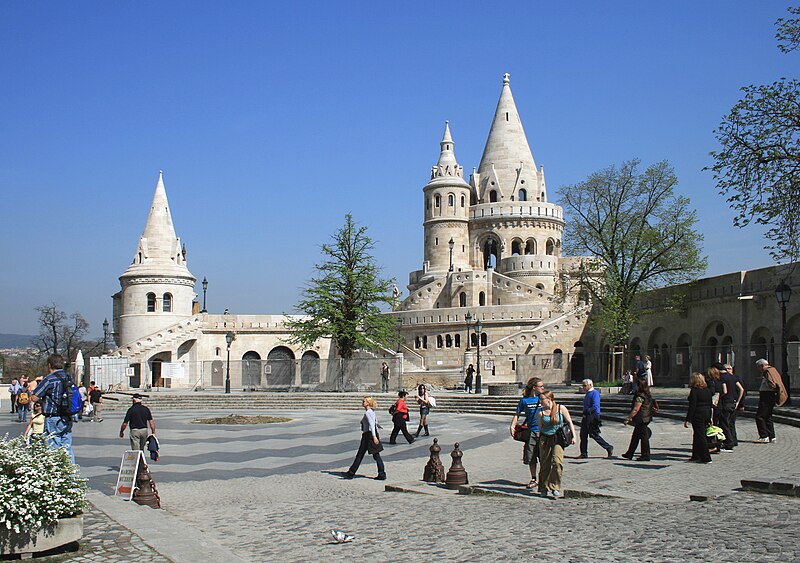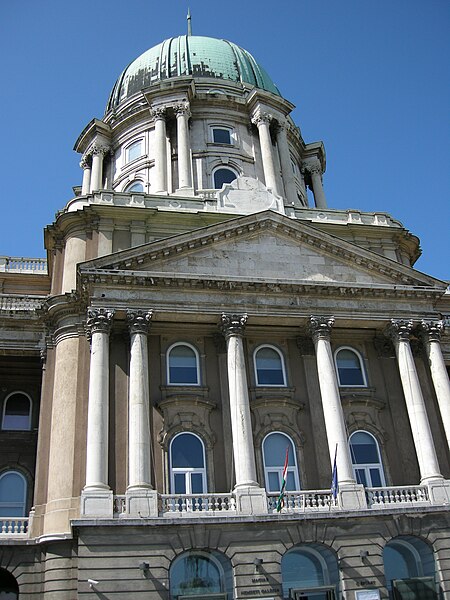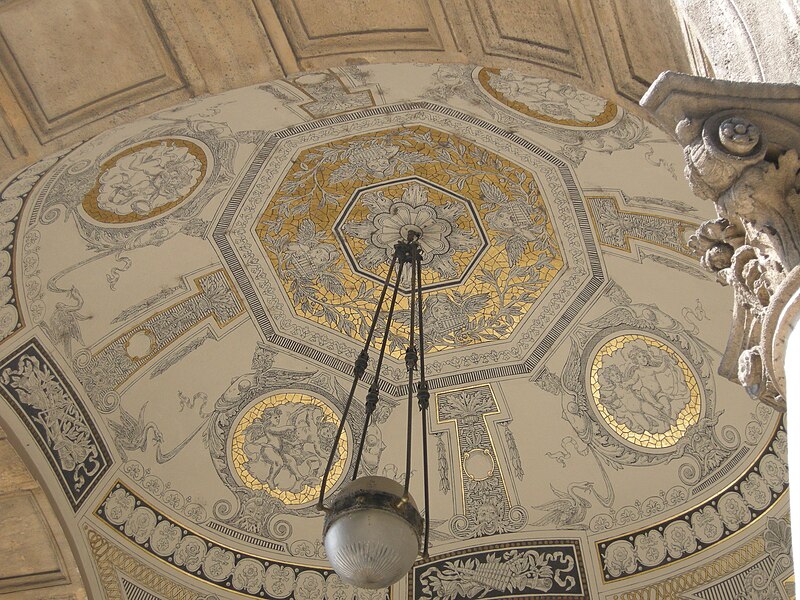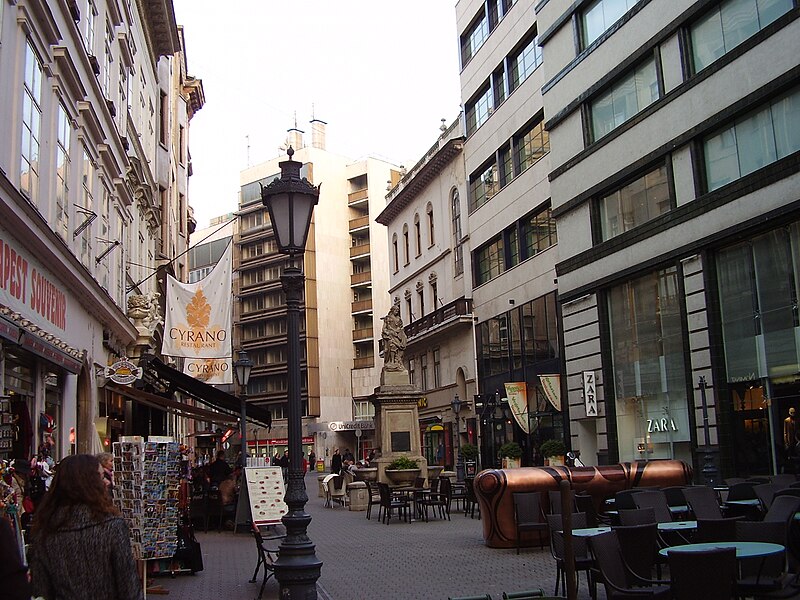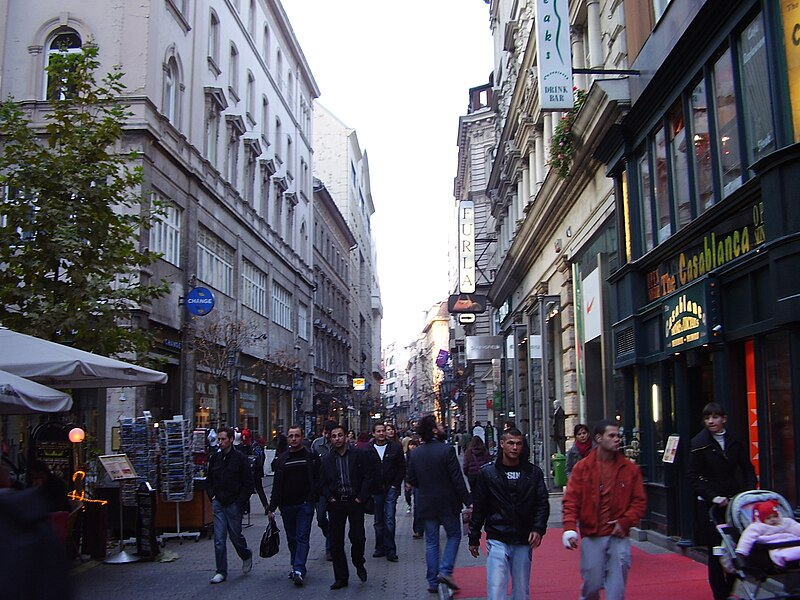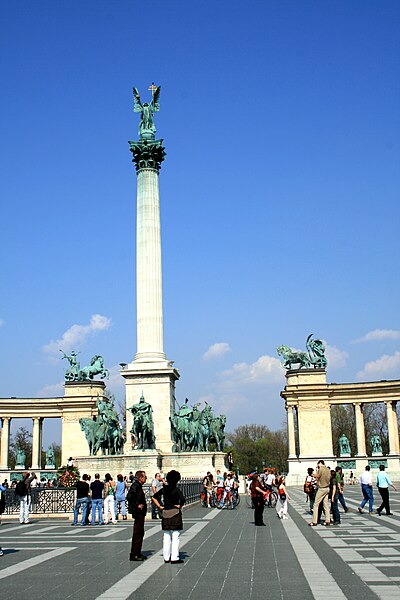Budapest is the capital and most populous city of Hungary. It is one of the most architecturally stunning cities in Europe. It is also home to the largest medicinal bath on the continent and one of the world's largest Parliament buildings. Stroll down the streets of Budapest, you can feel the capital's golden age in the late 19th century.
Budapest
Designed and built between 1895 and 1902, the Fisherman's Bastion (Halászbástya) is a terrace in neo-Gothic and neo-Romanesque style situated on the Buda bank of the Danube, on the Castle hill. Its seven towers represent the seven Magyar tribes that settled in the Carpathian Basin in 896. From the towers and the terrace a panoramic view exists of Danube, Margaret Island, Pest to the east and the Gellért Hill. There is also a bronze statue of Stephen I of Hungary mounted on a horse.
The Matthias Church (Mátyás-templom) is a Roman Catholic church. It was originally built in Romanesque style in 1015, although no archaeological remains exist. The current building was constructed in the florid late Gothic style in the second half of the 14th century and was extensively restored in the late 19th century. The church was the scene of several coronations, including that of Charles IV in 1916 (the last Habsburg king). It was also the site for King Matthias's two weddings.
The Hospital in the Rock is the name given to a hospital created in the caverns under Buda Castle in the 1930s, in preparation for the Second World War. The hospital saw its most heavy use during the 1944–45 Siege of Budapest, where it processed the wounded and the dead. Today, the hospital has been made into a museum (Sziklakórház Atombunker Múzeum), completed with waxwork recreations of hospital treatments and day-to-day scenarios during the siege.
It is a suspension bridge that spans the River Danube between Buda and Pest, the western and eastern sides of Budapest. It was the first permanent bridge across the Danube in Hungary, and was opened in 1849. At the time of its construction, it was regarded as one of the modern world's engineering wonders. It has asserted an enormous significance in the country's economic, social and cultural life. Its decorations made of cast iron, and its construction, radiating calm dignity and balance, have elevated the Chain Bridge to a high stature in Europe. It became a symbol of advancement and national awakening for Hungary.
Buda Castle (Budavári Palota) is the historical castle and palace complex of the Hungarian kings and was first completed in 1265. It has been called Royal Palace and Royal Castle in the past. Buda Castle was built on the southern tip of Castle Hill, bounded on the north by what is known as the Castle District (Várnegyed), which is famous for its Medieval, Baroque, and 19th-century houses, churches, and public buildings. The castle is a part of the Budapest World Heritage Site, which was declared in 1987.
The Hungarian National Gallery (Magyar Nemzeti Galéria) was established in 1957 as the national art museum. Its collections cover Hungarian art in all genres, including the works of many nineteenth- and twentieth-century Hungarian artists who worked in Paris and other locations in the West. It houses Medieval, Renaissance, Gothic art, Baroque and Renaissance Hungarian art.
Budapest
The Square is renamed in 1927 in honor of Lajos Kossuth, a Hungarian lawyer, journalist, politician and Governor-President of the Kingdom of Hungary during the revolution of mid 19th century. In the second half of the 19th century, great public buildings were erected on the square and it became the symbolic centre of the Hungarian state. It contains public buildings, museums and memorials, notably one to the victims of the 25 October 1956 massacre.
The Parliament is the seat of the National Assembly of Hungary, one of Europe's oldest legislative buildings. It is currently the largest building in Hungary and still the tallest building in the city. Budapest was united from three cities in 1873 and seven years later the Diet resolved to establish a new, representative Parliament Building, expressing the sovereignty of the nation. The building is in the Gothic Revival style; it has a symmetrical façade and a central dome. The dome is Renaissance Revival architecture.
Originally known as the Hungarian Royal Opera House, it was designed by Miklós Ybl, a major figure of 19th century Hungarian architecture. Construction began in 1875 and it opened in 1884. It is a richly-decorated building and is considered one of the architect's masterpieces. It was built in neo-Renaissance style, with elements of Baroque. Ornamentation includes paintings and sculptures by leading figures of Hungarian art. In beauty and the quality of acoustics, it is considered to be amongst the finest opera houses in the world. Today, the opera house is home to the Budapest Opera Ball, a society event dating back to 1886.
This Neo-Classical style Roman Catholic basilica is named in honour of Stephen, the first King of Hungary (c 975–1038), whose supposed right hand is housed in the reliquary. It is considered the most important church building in Hungary. Equal with the Hungarian Parliament Building, it is one of the two tallest buildings in Budapest at 96 metres (315 ft) - this equation symbolises that worldly and spiritual thinking have the same importance.
The Inner City is part of the historic old town of Pest. The main shopping street, Váci utca ("Váci Street"), is located here as a large part of the city's commercial life, filled banks and travel agencies. The Inner City Parish Church, the oldest building in Pest, can also be found here. It was built shortly after the reign of István I in the 12th century.
The museum was founded in 1802 and is the national museum for the history, art and archaeology of Hungary, including areas not within Hungary's modern borders such as Transylvania. In 1848 the Hungarian National Museum played a major role in the Hungarian Revolution. The Revolution was partially spurred by the reading of Sándor Petőfi’s 12 points and the famous poem Nemzeti dal on the front steps of the museum. This helped give the museum an identification as a major national identity for Hungary.
Budapest
The Margaret Island is an island in the middle of the Danube in central Budapest mostly covered by landscape parks, and is a popular recreational area. Its medieval ruins are reminders of its importance in the Middle Ages as a religious centre. The Knights of St. John settled on the island in the 12th century. Among the present historical monuments of the island are the 13th century ruins of a Franciscan church and a Dominican church and convent, as well as a Premonstratensian church from the 12th century. Today, the island also houses various sports establishments, a tennis stadium and an athletics centre.
The Hősök tere (Heroes' Square) is one of the major squares in the city, noted for its iconic statue complex featuring the Seven Chieftains of the Magyars and other important national leaders, as well as the Tomb of the Unknown Soldier. The square has played an important part in contemporary Hungarian history and has been a host to many political events, such as the reburial of Imre Nagy in 1989. Construction began in 1896 to commemorate the thousandth anniversary of the Hungarian conquest of the Carpathian Basin and the foundation of the Hungarian state in 1896.
The Hall of Art or Palace of Art, is a contemporary art museum located in a grand historic building. The large Neoclassical style structure was completed in 1896 and was originally built for millennium celebrations. The museum hosts exhibits on contemporary art. It operates on the program of German Kunsthalles, as an institution run by artists that does not maintain its own collection.
The castle was built in 1896, as part of the Millennial Exhibition which celebrated the 1,000 years of Hungary since the Hungarian Conquest of the Carpathian Basin in 895. As the castle contains parts of buildings from various time periods, it displays different architectural styles: Romanesque, Gothic, Renaissance, and Baroque. Today, it houses the Museum of Hungarian Agriculture, the biggest agricultural museum in Europe.
The Széchenyi is the largest medicinal bath in Europe. Opened in 1913, it was named after István Széchenyi, a Hungarian politician, theorist and writer, one of the greatest statesmen of Hungarian history. In the baths there are pools of varying temperature. Components of the thermal water include sulphate, calcium, magnesium, bicarbonate and a significant amount of fluoride acid and metaboric acid.










